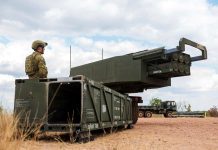
La Trobe University has launched a new research project aimed at solving the problem of air bubbles in healthcare devices and industrial processes, an issue that can have serious safety and environmental consequences.
The project, led by Associate Professor Ing Kong in partnership with Melbourne-based med-tech company Haemograph, has secured a $3 million Cooperative Research Centre Project (CRC-P) grant from the Australian Government.
The research will focus on developing technologies to prevent and remove air bubbles, which in medical contexts can cause dangerous complications such as air embolisms.
Associate Professor Kong said the project would address a critical challenge with wide-reaching impact. “By creating cutting-edge solutions, we aim to improve safety, reduce costs and develop sustainable technologies that will benefit both industry and the community,” she said.
Air bubbles are also a problem in industrial applications, such as nitrogen purging in wine bottling, which consumes significant amounts of energy and contributes to environmental impacts.
According to the university, the research could lead to innovations such as air-free syringes, advanced blood diagnostic devices, and air-free pump-filling systems, reducing waste, emissions and improving safety standards across industries.
Haemograph Chief Technical Officer Dr Alex Lubansky said the collaboration with La Trobe represented an opportunity to bring important technologies to market.
“This is a chance to advance and commercialise technologies we believe will deliver real benefits for both health and industry,” Dr Lubansky said.
La Trobe University Deputy Vice-Chancellor Research and Innovation Professor Chris Pakes congratulated the team on securing the funding.
“This grant is recognition of Ing’s leadership and her collaborative approach to working with industry to drive innovation,” Professor Pakes said.
“La Trobe is proud to support research with fantastic partners like Haemograph that promises to push technological boundaries and deliver practical, real-world benefits.”



















